
views
Know When It's Time
Decline in quality of life. Look for signs of pain, suffering, or a significant decline in well-being.
Chronic pain or illness. If your dog is facing a terminal illness or unmanageable chronic pain, euthanasia may be a humane option.
Incurable conditions. If your dog is diagnosed with an incurable condition that significantly affects their well-being, euthanasia might be a compassionate choice.
Complete loss of appetite. Persistent loss of appetite, leading to malnutrition and weight loss, may indicate a deteriorating health condition.
Difficulty in breathing. If your dog experiences severe difficulty in breathing or shows signs of respiratory distress, it could be a distressing indicator.
Comforting Your Dog at Home
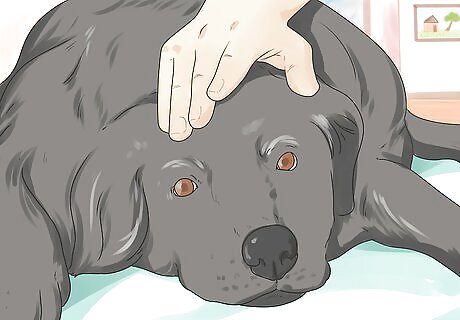
Stay patient with your dog. Older dogs commonly begin experiencing joint and muscle problems, and they can become frustrated with their discomfort and impairments. If your dog is grumpy or irritable during the end stages of life, simply do your best to be patient and provide the other comforts you can at home. EXPERT TIP Colleen Demling-Riley, CPDT-KA, CBCC-KA, CDBC Colleen Demling-Riley, CPDT-KA, CBCC-KA, CDBC Canine Behavior Consultant Colleen Demling-Riley (CPDT-KA, CBCC-KA, CDBC) is a Canine Behavior Consultant and the Founder of Pawtopia Dog Training. With more than 20 years of experience, she specializes in creating and customizing dog management programs for dog owners. She is a Certified Pet Dog Trainer-Knowledge Assessed, Certified Behavior Consultant Canine-Knowledge Assessed, Certified Dog Behavior Consultant, and American Kennel Club Canine Good Citizen Evaluator. Colleen is a member of the International Association of Canine Professionals and has been a featured expert in national media including the New York Times, Woman’s Day, Readers Digest, Cosmopolitan, and Yahoo.com. Colleen Demling-Riley, CPDT-KA, CBCC-KA, CDBC Colleen Demling-Riley, CPDT-KA, CBCC-KA, CDBC Canine Behavior Consultant Aging dogs need extra care and attention. Do not pressure older dogs to walk or play too much. Allow them to move at their own pace. If your dog enjoys being outside, find them a cozy and secure spot to lie in the backyard. If they like car rides, take them for short drives around the neighborhood and open the windows to let them smell the fresh air. These gestures make a big difference in how your dog feels during their old age or sickness.
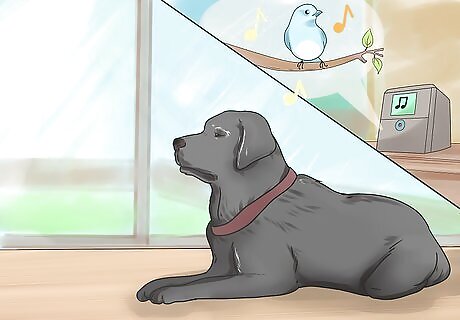
Provide a quiet environment. Chaos around the home will only stress both you and your dog as you're trying to spend the final hours of your dog's life together meaningfully and with compassion. Give your dog a quiet environment away from noisy children or other animals in the house. Soft, unobtrusive music can also be calming, or you may also use a nature soundtrack with birdsong and the sounds of running water.
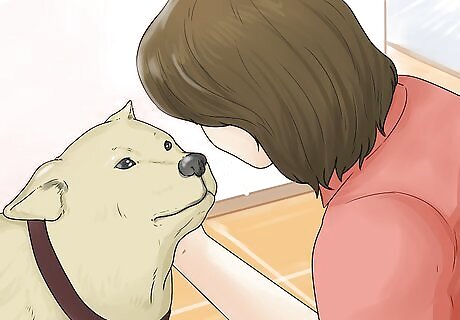
Speak in comforting tones. Reassure your dog that he's not alone and speak in soft comforting tones. Tell him “good boy” and the other phrases you normally use for positive reinforcement to let him know it's okay. Give him plenty of light pets as well. If you want to make sure you're there for the final moments, then you may choose to sleep next to his bed in a sleeping bag for the final nights.

Put down comfortable bedding. If your dog has a favorite dog bed, put it down for him. Otherwise you can put down some other blankets to help him lay down comfortably. Your dog may also have difficulty regulating his body temperature at the end, so keep some blankets handy to put over him in the event that he shows signs of being cold.
Snuggle in bed. Even if you don't usually share a bed with your dog, consider making an exception on these final nights. Allow everyone to revel in a few more nights of shared closeness. If sharing the bed isn't feasible, ensure ample love and attention during waking hours. Elderly dogs are also prone to pressure sores, so put down extra cushioning for an older dog. On a practical note, he may also have problems with incontinence at the end. Choose a spot you can easily clean and bedding you can wash later. If your dog does have any accidents, then clean them up patiently without scolding him. He can't help it. If your dog gets cold, you can also use a heater in the area to make him more comfortable.

Keep fresh water available. Hydration is still important to keeping your dog comfortable even in the final hours. Provide a bowl of water next to the dog bed, so your dog doesn't have to get up to drink. If your is having trouble rising even to drink, then use a clean dropper to help provide water.
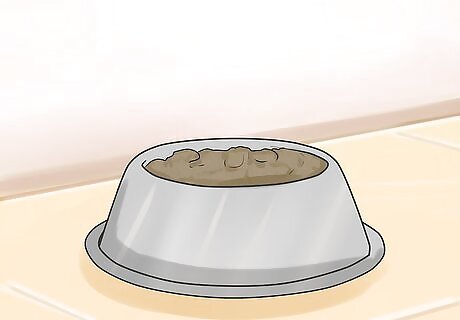
Prepare some of his favorite meal. If your dog has always had a favorite thing to eat, then you should make some of it in case he's hungry. However, it is pretty common for dogs to lose their appetite in the end stages of life, so don't force him to eat if he's not hungry. Solid food may also upset your dog's stomach at the end as certain systems related to digestion begin shutting down. If your dog still shows a willingness to eat but regular food is upsetting his stomach, then try mixing some baby food with water, or you can also try the Hills A/D diet, which is liquid.
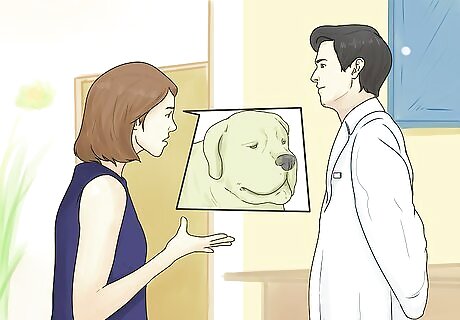
See your veterinarian about pain management. If your dog still has enough time and you're worried about pain in the final stages, then you can consult your vetfor pain management options for the final days. Signs that your dog might be in pain include excessive panting or gasping for breath or reluctance to move.
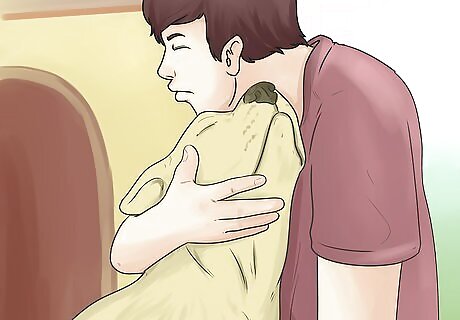
Hug your dog one final time. Once your dog passes, give him one final hug and say goodbye. It's a very painful moment, so remember that it's perfectly okay to cry, but also remember the good times you had with your pet and that he passed in a comfortable, loving environment with you doing everything you could. Be aware that some dogs seem to "move" or "take a breath" after passing away. As their nervous system shuts down, sometimes muscles in the body or lungs can spasm and look like a sign of life. It's also common for dogs to pass with their eyes open. You can close them if you want as you say your final goodbye, or you can pull one of the blankets over his head.

Take care of yourself. Once your pet has passed, know that you did everything you could and worry about taking care of yourself. Seek comfort in other loved ones who understand the loss. You can also light candles or say a small prayer for your pet if it feels right and helps. The ASPCA also has a hotline you can call to talk to someone who understands the difficulty of losing a pet. You can reach this hotline at 1-877-GRIEF-10.
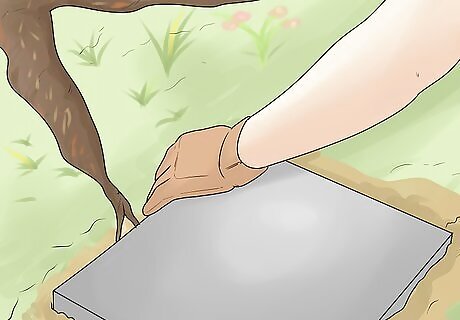
Handle your pet's remains. Though it's unpleasant, you do have to do something with your pet's remains once he passes. Many people choose to cremate pets or bury them whether in a pet cemetery or closer to home. Many services are available to help you deal with the remains to make the process easier on you. Look online or ask your vet for services in your area that will help with the option of your choosing.
Embrace the beauty of goodbyes. View the impending goodbye as a testament to the profound love you and your pet share. It's a reflection of the deep bond that has enriched both your lives. Recognize that saying goodbye, though heartbreaking, can also be a beautiful experience. It's a testament to the love and bond you share, allowing your pet to transition peacefully.
Addressing your pet's final resting place. As challenging as it may be, handling your pet's remains is a necessary step once they pass. Many pet owners choose cremation or burial, either in a pet cemetery or a more personal location closer to home.
Comforting Your Dog at the Vet
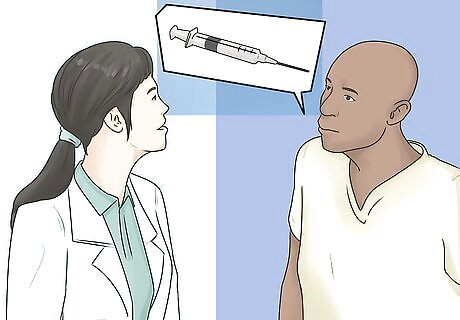
Consult a professional about euthanasia. The ASPCA has a specific hotline for those dealing with the difficult decision of euthanizing a pet. The line gives you someone to talk to who will understand your grief throughout the process, as well as information about your dog's quality of life at this stage and whether or not euthanasia may be the most humane option. You can reach the ASPCA hotline at 1-877-GRIEF-10.

Make the appointment. Though it hurts to do and it always feels too soon, you'll have to make an appointment for the vet to euthanize him when you know your dog is at the end of life. Your vet is likely to suggest this option if your dog's condition has significantly deteriorated and the vet believes the dog is in pain.
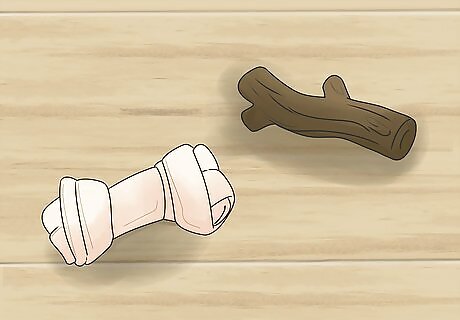
Bring some of your dog's favorite items. You'll want to surround your dog with a few of his favorite things at the end. A favorite blanket and a soft toy are very common items that you may choose to bring with to help comfort him as he passes. Favorite blankets or a dog bed will also be much more comfortable for your dog than the exam table, especially if he's already in discomfort.

Sign any forms at the vet. When you sign in for the appointment, you'll also have a few forms to fill out, including a consent form signaling that you know what is about to happen. While filling out forms is the last thing you want to focus on, it is a necessary part of the process.

Ask about a sedative beforehand. If your dog is experiencing any pain or discomfort from a medical condition, ask the veterinarian about giving him a sedative. This will make your dog more comfortable, and it will give you the peace of mind later knowing that your dog passed without any pain.

Pet your dog with gentle, loving strokes. Once you've been taken back to the private room and placed your dog down on his blankets with any other items, focus all your energy on spending quality final moments with him. The veterinarian will have to finish setting up the necessary items, so use this time to offer soft praise to your dog. Tell him you love him and pet him in his favorite spots.
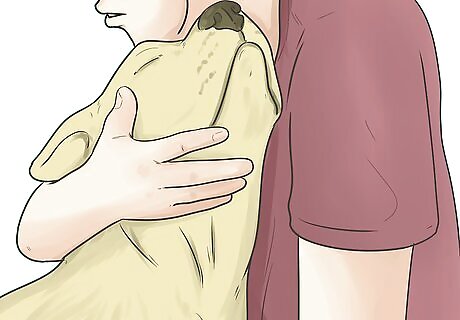
Hug your dog. Your vet will ensure you're ready and then begin injecting the solution to euthanize your dog. Many people choose to hug their dog during these moments because the process is fairly quick. Between six and twelve seconds after the solution is delivered, your dog will take a deep breath and then appear to fall into a deep sleep before taking a few more final breaths. Some pet owners also prefer not to be in the room for the actual injection and passing. The veterinarian's office is used to people who need to cope and grieve in their own ways. Ultimately decide what is right for you.

Give yourself time. Do not be embarrassed to cry in front of the vet or other employees at the clinic. They all understand what you're going through. After your dog has passed away, your veterinarian will give you the option to spend some additional one-on-one time with your dog. Some owners take this opportunity to say a few last words to their dog while others choose to pass on this option.

Discuss options for the remains. After giving you the time you need, your vet will discuss options concerning what to do with your dog's remains. This may include releasing them to you for burial or cremating them, which the vet can take care of. You can choose cremation either with the intent to take the cremains with you or not. In some places, it is against the law for the vet to return your pet's body to you for burial.


















Comments
0 comment